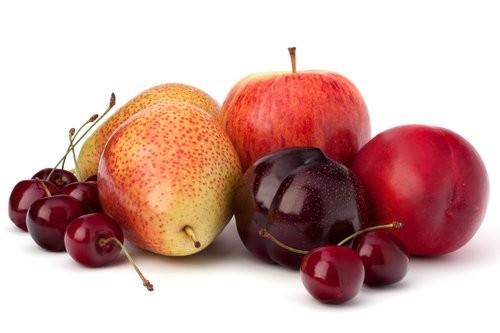FODMAPs are a group of fermentable carbohydrates found naturally in a wide array of foods. These include many fruits and vegetables, grains, nuts, legumes, dairy products, and even some processed foods. Understanding which foods contain high levels of FODMAPs can be challenging, as it’s not always obvious from looking at a food item. This guide provides a detailed overview of FODMAPs and how to identify them in your diet.
A basic understanding of which foods are high and low in FODMAPs is important for managing Irritable Bowel Syndrome (IBS) symptoms through dietary changes like the low-FODMAP diet. This awareness helps you avoid unwanted digestive discomfort.
While many people rely on general FODMAP food lists found online, these lists can often be inaccurate. The Monash University FODMAP program rigorously tests the FODMAP content of hundreds of foods from around the world. This research is published in scientific literature and is readily accessible via the Monash University FODMAP Diet App.
The Monash app uses a simple traffic light system (green, yellow, and red) to indicate whether a food is low, moderate, or high in FODMAPs.
When examining a specific food within the app, you can identify which specific FODMAPs are present. For example, pears primarily contain fructose and sorbitol, while cashews are high in fructans and GOS (galacto-oligosaccharides). Cow’s milk is primarily high in lactose.
The following information offers a general understanding of which food groups typically contain specific FODMAPs. However, for the most comprehensive and up-to-date information, always refer to the Monash FODMAP App.
Fruits
The primary FODMAPs found in fruits are sorbitol and excess fructose. Fruits particularly high in excess fructose include apples, pears, mangoes, cherries, figs, nashi pears, watermelon, and dried fruits.
Fruits that are notably rich in sorbitol include apples, blackberries, nashi pears, peaches, and plums. It’s important to note that some fruits, like apples, pears, and cherries, contain both fructose and sorbitol.
Vegetables
The main FODMAPs present in vegetables are fructans and mannitol. Vegetables particularly rich in fructans include artichokes, garlic, leeks, onions, and spring onions. Vegetables high in mannitol include mushrooms, cauliflower, and snow peas.
Grains and Cereals
The major FODMAPs found in grains and cereal-based foods are fructans, and to a lesser extent, GOS.
Grain and cereal foods especially high in fructans include wholemeal bread, rye bread, muesli containing wheat, wheat pasta, and rye crispbread.
Legumes and Pulses
The primary FODMAP in legumes and pulses is GOS. Legumes and pulses with particularly high GOS content include red kidney beans, split peas, falafels, and baked beans.
Dairy Foods and Alternatives
The main FODMAP present in dairy foods is lactose. Dairy products high in lactose include soft cheeses, milk, and yogurt. Many dairy foods are naturally low in lactose, such as butter and hard cheeses. For this reason, dairy foods are not necessarily excluded from a low-FODMAP diet.
Many plant-based milk alternatives are also low in FODMAPs, such as soy milk (made from soy protein), almond milk, and rice milk. When selecting milk alternatives, remember that they may not naturally contain calcium, so choose varieties that are fortified with calcium (containing >120mg calcium per 100ml).
Meat, Poultry, and Fish
Protein sources such as meats, poultry, and fish are naturally free of FODMAPs. However, processed and marinated meats may contain FODMAPs due to the addition of high-FODMAP ingredients like garlic and onion.
Low-FODMAP choices include plain cooked meats, poultry, seafood, and eggs. High-FODMAP options include marinated meats, processed meats (e.g., sausage/salami), and meats served with gravy or sauces that may include high-FODMAP ingredients.
Nuts and Seeds
Most seeds are low in FODMAPs. The main FODMAPs present in nuts are GOS and fructans. High-FODMAP nuts include cashews and pistachios, while low-FODMAP nuts include macadamias, peanuts, and pine nuts.
Sugars and Sweeteners
The primary FODMAPs present in sugar-sweetened foods and beverages are fructose and sugar polyols (e.g., sorbitol, xylitol, erythritol). It is advisable to carefully read food labels to identify high-FODMAP sugars, particularly in artificially sweetened drinks and confectionery.
High-FODMAP sugars include honey, high-fructose corn syrup, and sugar-free confectionery. Low-FODMAP options include dark chocolate, table sugar, maple syrup, and rice malt syrup.
Condiments and Sauces
Some dips, condiments, sauces, and marinades contain garlic and onion. If you’re uncertain about their FODMAP content, ask for them separately or on the side.
High-FODMAP options include garlic/onion-based marinades and sauces, and vegetarian mince. Low-FODMAP options include barbecue sauce, mayonnaise, soy sauce, chutney, and cranberry juice.
This sample food list highlights some key examples of high- and low-FODMAP foods. It’s crucial to consult with a registered dietitian or healthcare professional before starting a FODMAP diet. For the most comprehensive database of FODMAP food information, please refer to the Monash University FODMAP Diet App.
